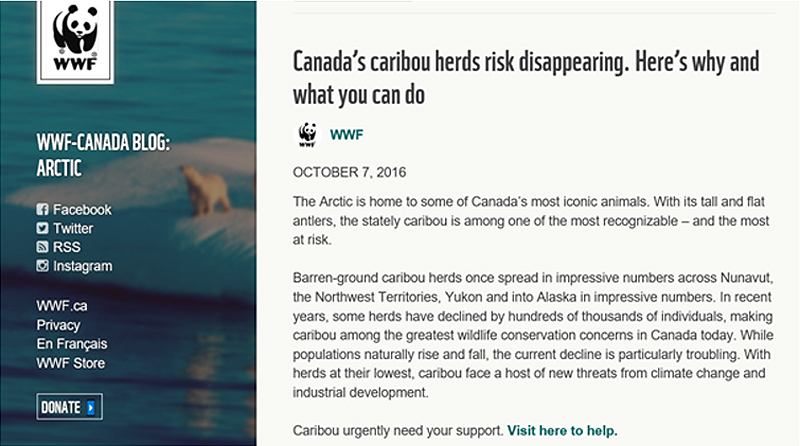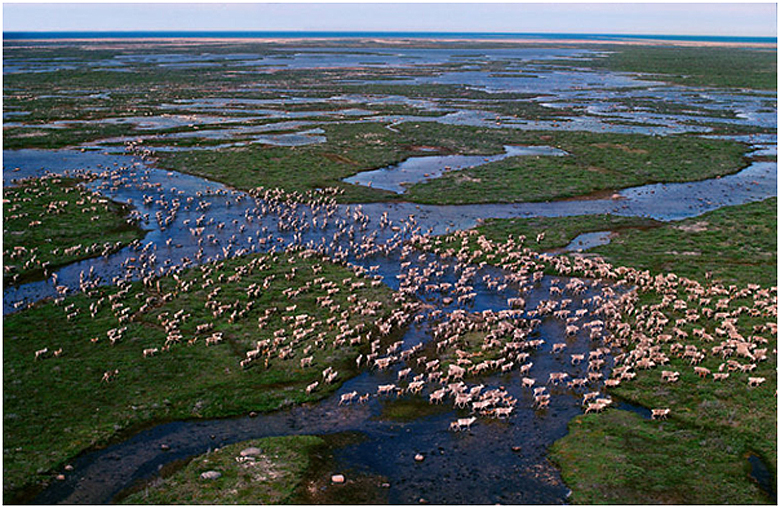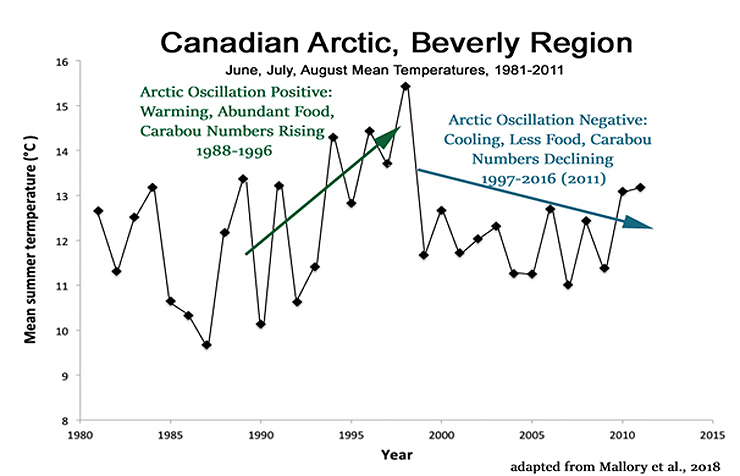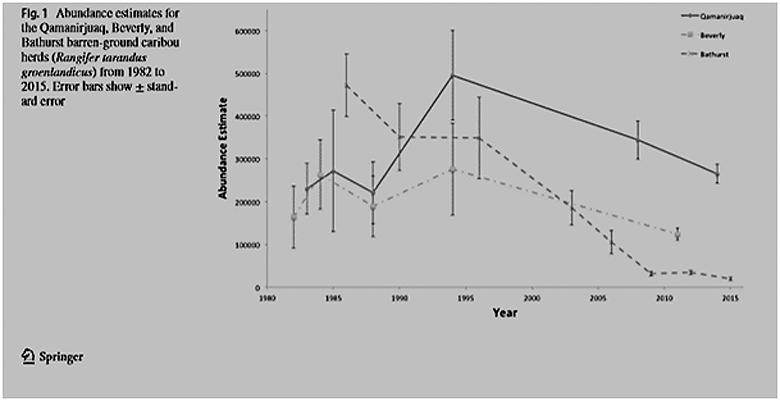Märkliga
nyheter från arktiska Kanada
WWF slår
på stora trumman, vildrenarna riskerar att försvinna
http://blog.wwf.ca/blog/2016/10/07/13-caribou-facts-herds-risk-disappearing/

Klimatförändringar är svaret enligt WWF.
Varmare vintrar och mer regn på vintern som ger isskorpor på marken och
täcker lavar.
Jag har läst mycket om att det blivit varmare i Arktis speciellt på
vintern, våren kommer tidigare. På norra Grönland är det i genomsnitt
-27 grader istället för -32 exempelvis.
De stora hjordarna har minskat i storlek.

Nu kommer det andra undersökningar som visar något annat.
Sommartemperaturen i delar av norra Kanada har minskat under toppnivån
på nittiotalet. Sommartemperaturen följer den arktiska oscillationen
(AO) vilket är arktiska temperatursvängningar.


Här ser vi ett diagram över hjordarnas utveckling inom tre stora populationer av vildren.
Forskare
säger:
“In fact, under a
changing environmental baseline we speculate that the relationships we
identified here might be altered, even reversed, and
summers with negative AO intensity that are cooler than average could
potentially correlate positively to caribou life-history traits. In
light of this, while we suggest that wildlife managers could consider
using the AO as an index of the vulnerability of the Bathurst, Beverly,
and Qamanirjuaq herds, this must be done carefully and in consideration
of the implications of a changing climate and other potential mechanisms
affecting caribou and their habitats”.
Dessutom
säger
forskarna:
From 1988 to 1996,
the summer intensity of the AO was largely in the positive phase,
with a mean value of 0.207 (± 0.135 SE), and
this was a period of population
stability or growth for each of the three herds that we examined here.
In contrast, from 1997 to 2016
the summer AO has remained largely in the negative phase, with a
mean value of − 0.154 (± 0.077 SE),
and over this period the
Bathurst, Beverly, and Qamanirjuaq herds declined in abundance. We
found that a greater proportion of the variation in body condition was
explained for male caribou compared to females. This is likely because
our model did not account for pregnant cows that tend to have higher
body fat than non-pregnant cows (Thomas and Kiliaan1998a).
Det är fråga om
naturliga klimatförändringar men inte på det sätt som WWF säger.